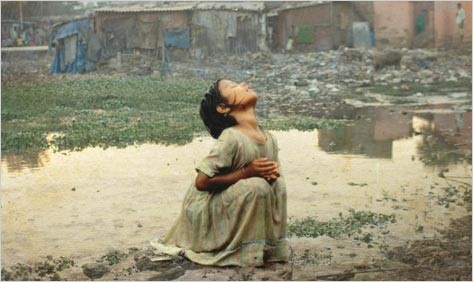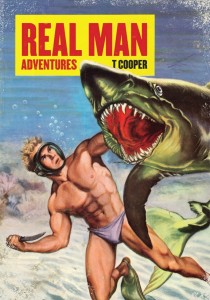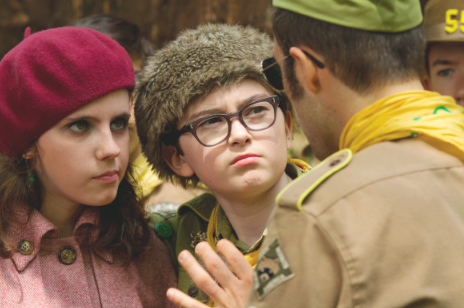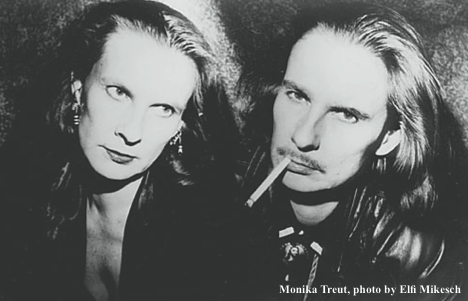■ By Craig J. Clark
2012 had plenty to offer the discerning moviegoer, if only they knew where to look for it. Sure, there were plenty of flashy action movies like The Avengers, The Dark Knight Rises and Looper, and such adventurous fare as Prometheus, Cloud Atlas and Life of Pi, but there’s more to the movies than big-budget spectacle (although I do count the crazily ambitious Cloud Atlas among my favorites of the year). In order to get a handle on the vast array of good-to-great films that came our way last year, I’ve separated them into categories. There are a number of films that I haven’t gotten the chance to see, though (like The Loneliest Planet, Django Unchained, Amour and Zero Dark Thirty), so this round-up is at best a work in progress.
■
FOREIGN
Before he teamed up with Lana and Andy Wachowski to bring David Mitchell’s sprawling Cloud Atlas to the screen, Tom Tykwer turned out 3, his most stylistically inventive film since Run Lola Run, which follows the lives of two men and one woman, observing how they intertwine in unexpected ways. As confounding as those connections can be, though, they have nothing on the plight of the protagonists in The Turin Horse, which is the film Hungarian master Béla Tarr has chosen to retire on. An ultra-bleak drama, which Tarr co-directed with Ágnes Hranitzky, The Turin Horse recounts the hardships faced day in and day out by a cab driver, his daughter and their broken-down horse. Not an easy film by any stretch of the imagination, but it’s one that rewards those with the patience to see it through to the end.
It’s impossible to sum up the achievements of Asghar Farhadi’s A Separation in a couple of sentences, but the one thing I will say about last year’s Best Foreign Film at the Academy Awards is that its tightly constructed screenplay was robbed. (As much as I liked Woody Allen’s Midnight in Paris, its comparatively lax script can’t help but pale in comparison.) At the other end of the spectrum is Leos Carax’s Holy Motors, which is all over the map, but in a way that’s completely exhilarating. An unabashed love letter to cinema in all its permutations, Holy Motors is without a doubt my favorite film of the year, built around a virtuoso performance by the incomparable Denis Lavant. A Best Actor nod, as well-deserved as it might be, is probably too much to hope for, though. (Incidently, if you missed it at the IU Cinema you’ll have a second chance to see it in January when it returns as part of The Ryder series.)
■
HORROR
On the horror front, Daniel Radcliff attempted to break out of the Harry Potter mold with Hammer’s The Woman in Black, which had atmosphere to burn but was a lot creakier than it needed to be. Much better was the genre-busting The Cabin in the Woods, which director Drew Goddard co-wrote with Joss Whedon (who had an exceedingly good year between this and The Avengers). A clever deconstruction of slasher-movie tropes, Cabin stands as a rebuke to those in the industry who think the lowest common denominator is something to aspire to. And while not every segment in the horror omnibus V/H/S worked, it was another reminder that Ti West (whose The Innkeepers sadly never made it to theaters here) is an up-and-comer to watch.
Cabin In The Woods
■
DOCUMENTARY
Unfortunately, I didn’t get to see all the documentaries that came through town last year (which means The Queen of Versailles and The Imposter are conspicuously missing from my list), but leading the pack was Oscar nominee Pina, which was Wim Wenders’s tribute to the late Pina Bausch, a daring choreographer who never stopped taking risks and pushing herself. That could also be said about the subject of David Gelb’s Jiro Dreams of Sushi, about an 85-year-old sushi master and the son who’s very eager to take over the family restaurant. And family matters were also front and center in Ross McElwee’s Photographic Memory, which charts the acclaimed documentarian’s difficult relationship with his adult son while giving him the opportunity to explore his own past.
■
ANIMATION
In the field of animation, 2012 was a very strong year, with robust offerings from Studio Ghibli (The Secret World of Arrietty), Aardman (The Pirates! Band of Misfits), and Pixar (Brave). It also brought us Czech animator Jan Svankmajer’s latest, the gleefully anarchic Surviving Life (Theory and Practice), which was screened as part of a retrospective of his work at the IU Cinema. And Tim Burton expanded his early short Frankenweenie to feature length using the medium of stop-motion (an improvement over his previous such effort, the listless Corpse Bride). The biggest surprise of the year, though, was Disney’s Wreck-It Ralph, with its fully realized video-game world and well-developed characters. It’s also the strongest indicator of the influence Pixar has had on its parent company to date.
■
COMEDY
After a long absence, Whit Stillman emerged from the wilderness with his campus-set comedy of ill manners Damsels in Distress, which hopefully heralds a Terrence Malick-like renaissance for the much-missed chronicler of the upper crust. He was joined by Richard Linklater, who returned to form with the wickedly funny Bernie, which gave Jack Black his best role in years (as a beloved mortician who’s so charming, he almost gets away with murder). Woody Allen’s To Rome with Love was less substantial, but still enjoyable, and it was neatly counterbalanced by Todd Solondz’s Dark Horse, about the aspirations of less worldly individuals. When it comes to dark comedy, though, nothing this year came close to William Friedkin’s Killer Joe, his second collaboration with playwright Tracy Letts. Not a film for everyone (there’s a very good reason why it got slapped with an NC-17 rating), but its most infamous scene (involving a piece of fried chicken) will be talked about for years to come.
■
DRAMA
When looking for dramatic source material it’s hard to go wrong with Shakespeare, as Ralph Fiennes proved with his directorial debut, which transformed the less-heralded play Coriolanus into a dynamic war film. And with the horrific events in Newtown, Connecticut, fresh in people’s minds, I imagine Lynne Ramsay’s chilling We Need to Talk About Kevin is due for a reevaluation. At the very least, it should be more widely recognized that Tilda Swinton turned in a riveting performance as the mother of an unrepentant high school shooter. Failing that, if Rachel Weisz doesn’t score a nomination for her work in Terence Davies’s The Deep Blue Sea, based on the play by Terence Rattigan about a love affair that’s essentially doomed from the start, we can officially declare the Academy completely out of touch.
■
AUTEUR CORNER
Finally, we come to the place for directors with such singular visions that they transcend genre. The ever-industrious Steven Soderbergh delivered a powerful one-two punch with the ass-kicking Haywire (which re-teamed him with screenwriter Lem Dobbs, late of Kafka and The Limey) and the buns-baring Magic Mike (which Matthew McConaughey effortlessly stole out from under Channing Tatum). I loved Guy Maddin’s existential gangster fantasy Keyhole and Wes Anderson’s whimsical coming-of-age tale Moonrise Kingdom so much I saw both of them twice. And Japanese humanist Hirokazu Kore-eda continued his winning streak with the down-to-earth I Wish, about two brothers trying to reunite their divided family.
Unsurprisingly, the second half of the year was just as strong as the first. Newcomer Benh Zeitlin burst onto the scene in a big way with the Sundance favorite Beasts of the Southern Wild. David Cronenberg took on Dom DeLillo and the challenge of trying to get Robert Pattinson to act in Cosmopolis. Paul Thomas Anderson took on Scientology-by-proxy with The Master (which featured mesmerizing performances by Joaquin Phoenix, Philip Seymour Hoffman and Amy Adams). And David O. Russell’s Silver Linings Playbook proved that you don’t have to be nuts to fall in love with a mentally ill person, but it doesn’t hurt.
I could go on at length about any one of these films, but I’d like to close by highlighting Marcel Carné’s Children of Paradise, which was restored and re-released to great acclaim last year. For as great as 2012’s crop of films was at times, I don’t think any of them transported me in quite the same way as Carné’s 1945 classic. If you managed to see it when it screened at the IU Cinema, you should count yourself lucky. I know I certainly do.
■
The Ryder, January 2013










